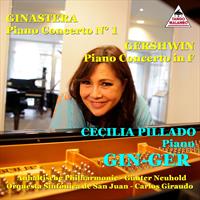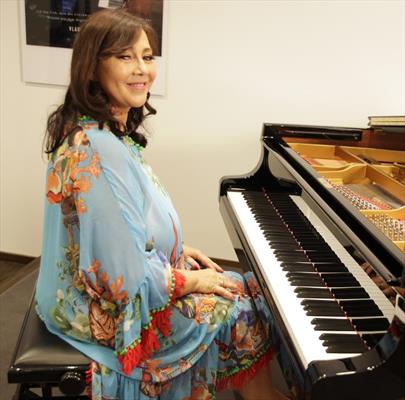Promotion Text
Pianist Cecilia Pillado presents her new album “GIN-GER”
Cecilia Pillado presents her new album “GIN-GER” that contains two of the most fascinating piano concertos of the 20th century: Ginastera’s Piano Concerto No. 1 Op. 28 and Gershwin’s Piano Concerto in F. Recorded live in the 90s, today they could, without a doubt, be considered legendary recordings.Demanding Pieces and Virtuosic InterpretationCecilia Pillado’s status as a piano virtuoso is vividly demonstrated in her remarkable ability to navigate the technical demands of this repertoire with mastery. For instance, her interpretation of rhythmically complex pieces, such as the Ginastera’s Concerto, showcases her precision and agility. Ginastera’s music demands not only a profound sense of rhythm but also the capacity to execute rapid shifts in dynamics and articulation - tasks that Pillado accomplishes with apparent ease. Similarly, in works like Gershwin’s Concerto in F, which requires a pianist to blend classical virtuosity with jazz-inflected rhythms and phrasing, Pillado’s mastery shines.Contrasting StylesGeorge Gershwin, celebrated for blending jazz and classical music, infuses his Concerto in F with the vibrant rhythms, colors and jazz-inflected themes of the 1920s New York. In contrast, Alberto Ginastera, a pillar of Argentinian musical nationalism, crafts his Piano Concerto No. 1 with rhythmic intensity and harmonic complexity rooted in the folk traditions of his homeland, filtered through a modernist lens.Despite these stylistic differences, both concertos share a structural narrative that shapes their musical energy in remarkably similar ways. Although these masterpieces were born in distinct cultural and stylistic worlds, their structures reveal intriguing similarities in the design of their opening and closing movements.Structural SimilaritiesIn both works, the first movements are an explosion of dynamism, filled with rhythmic vitality and dramatic contrasts. The second movement in Gershwin’s Concerto has a poetic, nocturnal atmosphere with a long winds and brass introduction in Blues-Style until, in a faster section, the piano appears. In Ginastera’s Concerto, the second movement is very fast and is played throughout with the dynamics ‘pianissimo.’ It has a pointillist instrumentation and wonderful orchestra percussion that justifies the “hallucinating” effect. The third movement is an intense lyrical prelude in which the middle part has a passionate character.The final movements in both pieces are very similar to each other due to their frenetic, constant and overwhelming rhythms. The tempo throughout is pulsating, energetic and vigorous. In Gershwin’s, a rondo blends sparkling piano passages with syncopated rhythms, whereas in Ginastera’s finale, the "Toccata concertata" delivers electrifying virtuosity as the piano and orchestra engage in a frenetic interplay. This movement was popularized by the English progressive rock band “Emerson, Lake, and Palmer”. Two Finali with fireworks!





